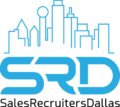The Importance of Body Language in an Interview
Human’s do not communicate by voice. It’s vital to remember that the defining feature of your ability to do well in an interview will be control of, and expression via body language and non-verbal communication.
How important is body language in an interview?
70% - 90% of all communication is non-verbal. Which means that the way you sit, hold eye contact, scratch your nose, where you look, how you inflect your voice, the way you listen and the way you sit and stand will say more about you than any word you say.
If this sounds overwhelming, don’t let it be - body language control is a misnomer. You don’t need to control it per se, it’s more about using it at critical moments to reiterate meaning or confidence, humility, passion or interest.
The most common forms of non-verbal communication are:
Vocal Tone
- The way you say something says more than what you're saying. Pitch, volume, and speed of vocal delivery are significant cues for people to understand the meaning behind language used. Warmly delivered criticism, for instance, would not make you panic. A coldly delivered agreement may signify something more sinister.
Facial Expressions
- Your face is your emotional map. Smiling is contagious, as is yawning. Be mindful of how you are setting your facial expression when actively listening or describing a certain scenario. Eye contact is also encouraged, but eye contact held too long is not. It can come across as overly intimate or outright hostile.
Hand gestures and gesticulation
- Gesticulation is a vital tool in showing passion and confidence in your subject matter being discussed, but hand gestures can also be signs of nervousness or unpreparedness (shaking and fidgeting). Positive gesticulation can embellish, entertain, communicate and illustrate a point, but should only be used when describing more personal aspects of your professional persona, such as passions, hobbies, successes in the workplace and incredible feats of Sales skill.
Interview Hack!
Mirroring! Use mirroring to your advantage - subtly mirror your interviewers posture and body language throughout the interview. It’s a skillful nonverbal trick into de-stressing social situations and inferring mutual trust and cooperation.
Posture
- Most people will know that slouching in an interview is a no-go, as is crossing your arms while talking to an interviewer. But other more subtle postures can be signs of negativity - for instance, sitting down and facing a door signifies wanting to escape. Generally speaking, back straight, arms open and not folded, placed neatly in front of you, legs not crossed but placed together, signifies an open demeanor and eagerness to communicate.
Physical Distance
- Generally speaking you won’t have control over your interview placement - it could be a panel metres away from a group of interviewers, or in a small room one on one, or on a screen - but distance well managed shows confidence and comfort in the presence of your interviewer, but too close and you’re in personal space.
It’s worthwhile to point out the top 3 most important considerations for in-person interviews and remote or screen based interviews.
Both formats need their own unique balance of communicative and non-verbal communicative skills.
In Person interviews
What to be aware of:
- Posture: how you stand, sit and introduce yourself set the tone of your interview,
- Physical Distance: rapport is easier to build with a mutually understood distance not too close and not too far from an interviewer,
- Gesticulation and Mirroring: use hand gestures to illuminate points and mirror when active listening.
What shouldn’t you do:
- Yawn or show uninterest: it’s unprofessional and reflects terribly on your ability to sell,
- Face a door, or look out of a window constantly: it signifies trying to escape or wanting to leave the interview,
- Hold eye contact for too long: it can come across as challenging, creepy or too intimate and is not appropriate for an interview.
Screen Based interviews
What to be aware of:
- Vocal Tone: use your storytelling and sales skill to tell your story through engaging use of language,
- Facial Expressions: make sure you’re distracted by things outside of the screen, and use eye contact and smiling to show interest and connection,
- Gesticulation: a minor but still effective tool on screen. You can use subtle gesticulation to illuminate points.

